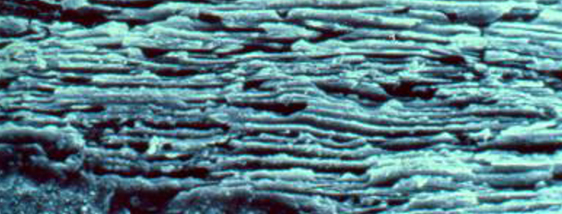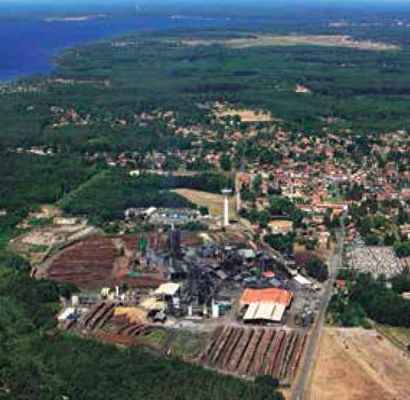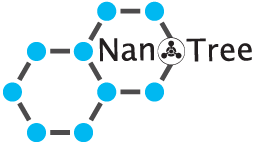A specialist company dedicated to supplying quality chemicals and processing aids.
Products Overview
Activated Carbon
Activated carbon is a form of carbon that has been manufactured to have a complex phase of graphite like crystallites with a porous structure consisting of micro pores (2nm or less), meso (between 2-50nm) and macro pores (larger than 50 nm). These porous structures provide a large surface where adsorption of unwanted organic compounds can be carried out. Common activated carbon have surface areas of 800 to 1500 m2/gm. Differences in pore sizes affects the adsorption capacity for molecules of different spatial shapes and sizes.

A photomicrograph of activated carbon showing graphitic layers
Calgon Carbon is the world’s leading manufacturer of activated carbon with manufacturing centres in the USA and Europe. Calgon Carbon first started manufacturing activated carbon products in 1940 and has been a pioneer in developing advanced products for water, air and industrial uses. Calgon Carbon product portfolio now encompasses more than 700 direct market applications with more than 100 different types of activated carbon. From drinking water and waste water treatment, to water recycling, to odour control, to chemical and pharmaceutical manufacturing, you can be assured that Calgon Carbon and Nano Tree has the experience and capabilities to provide you with the right choice of product.

One of the Calgon Carbon manufacturing plants
Types of Activated Carbon
-
FILTRASORB® Series
Filtersorb 400M is a grade of activated carbon that has been developed by Calgon Carbon for the removal of contaminants from municipal drinking water. They are excellent for removing odour causing compounds from water like geosmin, DBP precursors like tri halo acids, endocrine disrupting agents, trichloro ethylene, PCB’s, chlorine and other harmful causing compounds. It complies with AWWA requirements for use in drinking water applications. -
CAL® Series
Cal is a special grade of activated carbon for the removal of color and purification from aqueous or organic liquids like glycerine, urea, monosodium glutamate, organic esters, caustic liquours, muriatic acids. It can be used as a fixed bed or moving beds. 12x40 is the grade for maximum adsorption of liquids with low to medium viscosity and gives low head loss. Cal provides a high pore volume, high density and right pore structure for maximum odour and colour removal. This carbon wets readily and does not float. It complies with AWWA and codex reqirements. -
CANE CAL®
This grade is a granular activated carbon designed specifically for treatment of cane liquors. It has high decolourizing abilities and a pH controlling ability as a result of incorporation of magnesite within the carbon granules. The grade 0f 12x40 has been selected to give a high rate of adsorption and low resistance to flow with liquid of medium viscosity. This product complies with the requirements of codex for use in food. -
WPX®
This grade of activated carbon is ideal for removal of toxic compounds, dyes or refractory organic compounds from waster waters. Their high iodine number allows for adsorption of a wide range of organics present in waste water to lower its TOC. It maximum ash content of 15 % means that it will impart less inorganic impurities to the water stream. WPX is effective in removing mercury, dioxin, and other VOC’s from flue gas. Simple injection into the flue gas stream will result in 90% reduction in contaminant levels. It can be used in stabilizing soils and solidification process of remediation. -
CENTAUR® Series
Centaur activated carbon is an activated carbon with special electronic character that accelerates reaction rate, reduced chemical requirements as it promotes oxidation, reduction, decomposition, substition and elimination reactions. All centaur products are manufactured with a peroxide number. Specific applications include hydrogen sulphide removal, chloroamines removal, sulphur dioxide removal, nitrogen oxides removal, iron oxidation, phosphine abatement, hydrazine decomposition, phosgene removal and hydrogen peroxide destruction. -
GOLD PLUS
This carbon is designed to achieve high gold loadings and release them easily. It can be used for carbon in pulp process (CIP), carbon in leach process (CIL). GRC has exceptional abrasion resistance and reduced tendency to plug retention screens in adsorbtion tanks. Platelets can end up oriented in the fluid in such a manner that they pass through retention screens resulting in a loss of gold containing carbon. In order to hava a product that has less tendency to plug screens with platelets, GRC is processed through a wedge wire screen and dedusted. Its higher adsorption rate allows less gold losses and more profits whilst its easy recovery leads to lower soluble gold losses. -
HGR®
HGR is an activated carbon that is impregnated with sulphur to adsorp mercury from air, natural gas and its by product hydrogen streams. Its structure is made so that it can have a high loadings and at the same time allow the gaseous streams to flow through it, reducing pressure loss. Removal is through using single or dual adsorption columns to reduce the concentration of mercury to 0.01 µg/NM3. Contact by the mercury vapour in the pores of the activated converts to mercuric sulphide. The loading can be as high as 30%. Calgon carbon can design adsorbtion streams up to 122°F and 99 RH. -
OLC Series
OLC is a coconut based activated carbon for removal of dissolved organic contaminants from water, waste water and process liquids. Contaminants includes odour, TOC, chlorinated solvents and color compounds. This carbon is especially effective for removing trace organic compounds like vinyl chloride, methylene chloride, MTBE, THM. OLC is certified to NSF/ANSI 61 standard. -
PWA
PWA is an acid washed powdered activated carbon with low acid leacheable iron content. It is specially designed for use with low pH liquids where low leacheates are needed. PWA has a particle size that provides rapid adsorption and good filterability. This carbon is produced from selected grades of bituminous coal and steam activated at high temperatures. This product passes requirements by the Food chemicals codes published by the US pharmacopeia. -
SGL
SGL is a granular activated carbon which is made to purify or decolorize many aquous and organic liquids. SGL is made from selected bituminous coal to give superior hardness, high abrasion resistance and long life. This carbon has a high pore volume and a moderately large surface area. Its pore structure has been selected for adsorbtion of high and low molecular weight substances. Each granule of SGL is permeated by a system of large macro pores which serve as avenues for rapid diffusion of adsorbed materials to pore areas. This enhances both adsorption and reactivation. This grade of carbon is ideal for column operation. -
SULFUSORB®
Sulfusorb is a tightly controlled manufacture using steam activation and then impregnated with copper oxide. This is specific for the removal of hydrogen sulfide and low molecular sulfur compounds from gas streams. Hydrogen sulfide is first physicalled adsorbed into the pores of the carbon where it comes into contact with the CuO resulting with an increased capacity over non impregnated ones. It has high mechanical strength and good transport pores giving excellent recativation results. -
CPG®
This acid washed activated carbon is designed specifically for low ph solutions like corn syrup. Since this carbon is acid washed the leacheables is reduced to a minimum. It can be used as a fixed bed or moving bed. Other low ph solutions suitable for use is purifying muriatic acid and adipic acids. CPG LF is made from select grades of bituminous coal with suitable binders to give superior hardness and long life. CPG LF is produced with low fines or dust. Its high surface area, large pore volume and high density make it suitable for adsorption of odour and colour molecules. -
HPC® Series
The HPC series of virgin coal based activated carbon is made to remove a wide range of impurities in air, gas or liquid streams. It has a lower density compared to commonly available acitvated carbons and had the advantage of lower cost per fill. HPC acitvated carbons can be easily reactivated for reuse. -
GW
GW, BL and CP are three types of activated carbon designed to remove taste, odor and colour from water and industrial process. Each of these grades has its own unique pore structure made by variation of manufacturing conditions. These carbons are certified fo ANSI/NSF standards 61. The choice of activated carbon will differ depending on the impurities needed to be removed and the processing conditions. For further information call the friendly sales representative from Nano Tree. -
FORMASORB
This activated carbon series is specially activated from coconut shells to remove formaldehyde and other aldehydes which is difficult to remove using other adsorbents including standard activated carbon. It is manufactured by high temperature steam acitvation under rigidly controlled conditions. This carbon is a proven product for a variety of applications from gas industrial streams and indoor air quality. -
SORBAMINE
This activated carbon is manufactured specially for the oil and gas industries for the treatment of amine solutions like DEA and MEA. Sorbamine is available in 2 mesh sizes 4x10 and 8x30 to meet the particular pressure drop. Both sizes have shown excellent adsorption capabilities when used in slip stream amine treatments. -
Acticarbone® and Anticromos® Series

The Parentis en Born plant at the very heart of the Forêt des Landes in France.
The Actocarbone and anticromos range of activated carbon is made from wood sourced from reneawable forests in foret des landes France. This exceptional raw material and Calgon’s mastery of the manufacturing process produces the world’s best carbon for adsorption in the pharmaceutical, food and beverage sectors and also process for fine chemistry. Due to their highly developed macroporosity, phosphoric acid activated carbon is highly recommended for decolourization and steam activated ones for odour and removal of colour precursors. These specialized carbon are used for decolorization and purification of amino acids, organic acids, caffeine, enzymes, ggelatine, yeast extracts, sweeteners, starch hydroxylates. In the chemical industries acticarbone is used for organic acids, alcohol and esters. They are also commonly used in the pharmaceutical industries for manufacturing amino acids, analgesics, antibiotics, lactose and vitamins. These products comply to USP, FCC, codex oenologique.
-
ST 1 X
ST 1 X is a coal-based pelleted carbon effective in the removal of acid gases and odor compounds from air. -
PULSORB® Series
PULSORB Series is a range of virgin coal-based powdered activated carbons with a rapid rate of adsorption and high adsorbate loading capacity. These powdered activated carbons are effective in removing impurities including taste, color, odor and other organics from water, food and beverage products. This series is Kosher certified and meets the requirements of Food Chemicals Codex (FCC). It is also Certified to NSF/ANSI Standard 61 and meets AWWA standards. -
DSR C
The DSR C is a reactivated carbon suitable for liquid phase applications. It is effective in the removal of organic contaminants from industrial wastewater, process water, groundwater remediation and other non-potable waters. -
Carbsorb® Series
The Carbsorb® Series is a range of cost-effective bituminous coal-based granular activated carbon designed for liquid phase applications. It is effective in the removal of organic contaminants, taste and odor.


